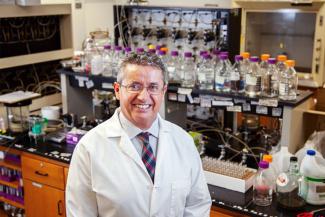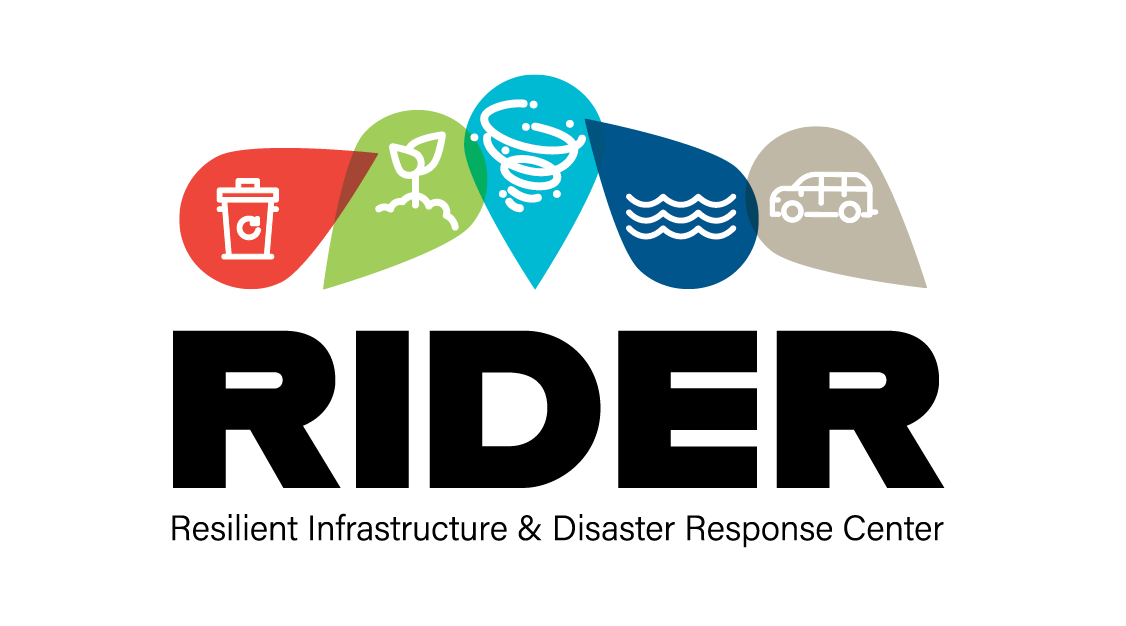
Tarek Abichou, executive director of the Resilient Infrastructure and Disaster Response (RIDER) Center and a professor of civil and environmental engineering at the FAMU-FSU College of Engineering. (Mark Wallheiser/FAMU-FSU College of Engineering)
Originally published by Florida State University News
Most people think about trash for 30 seconds a week — the amount of time it takes them to bring their garbage bin to the curb.
Tarek Abichou has spent three decades focused on it.
As executive director of the Resilient Infrastructure and Disaster Response (RIDER) Center and a professor of civil and environmental engineering at the FAMU-FSU College of Engineering, he researches how to cut down the amount of methane from landfills and other sources.
He answered questions about RIDER’s Methane Emissions Reduction Initiative (MERI) and how this research can play an important role in reducing greenhouse gas emissions.
Why is methane important?
It’s easy to see why many people do not know much about methane. When it comes to greenhouse gases, the headlines tend to focus on carbon dioxide (CO2), and so most scientists and engineers have been fixated on reducing CO2. Yet despite methane’s relatively low profile, it plays a crucial role in global warming. Methane (CH4) is responsible for about a fifth of the enhanced greenhouse gas effect, even though there is about 200 times less in the Earth’s atmosphere than CO2.
Methane’s global warming potential (GWP) — or warming potency compared to carbon dioxide — is around 23 to 80, depending on how it is measured. That means it is 23 to 80 times more effective at trapping heat in the atmosphere than CO2 over a 100-year period.
One other reason methane matters is that its lifetime in the atmosphere is 10 to 12 years. That is very different from CO2, which can stay in the atmosphere for centuries. That’s why it’s important to act on methane now.
How can we reduce methane in the atmosphere?
Human activities account for about 64% of global methane emissions, and landfills are about 15% of that amount. MERI has developed new technologies to measure and reduce methane emissions.
New measurement tools allow us to quantify landfills’ contributions to greenhouse gas emissions and assess whether interventions are working. Those include ways to measure emissions with drones and other remote sensing techniques, giving us an easier way to get a picture of methane emissions for an entire landfill, which can be hundreds of acres large.
We have developed and field-tested a range of biofiltration technologies to reduce emissions. Biofilters are ideal in situations where emissions are coming from one point, such as landfill gas wells, abandoned oil and gas wells, coal mines or dairy farm venting systems. Other technologies, such as biocovers, are designed for larger areas. We developed tools that allow users to consider the local climate and soil conditions to optimize the rate at which bacteria convert methane to water and CO2.
Another important tool is a computer model to convert the reduction in methane emissions to carbon credits. Then, if there is a carbon credit market, that reduction has a financial value. That gives landfill operators a reason to invest time and money in projects to reduce their methane emissions.
Tell me more about the technology that MERI has developed to reduce the amount of methane coming from landfills.
We have developed a solution that can be readily deployed and doesn’t cost a lot of money. It takes advantage of a naturally occurring bacteria that lives where there is methane. We’re optimizing its capacity to use methane as a food source.
What our technology does is develop the right soil mixture and design, depending on the climate, to make sure that we provide the optimum conditions for the bacteria to grow and consume methane. These bacteria are living things. They react to weather conditions such as rain or heat, like we do. We were able to model how they behave under different conditions, so we can account for their different oxidation capacity under different conditions. You can’t design a biofilter the same way in Alaska as in Florida, for example.
This research has an interdisciplinary component, correct?
Yes. Jeff Chanton from the Department of Earth, Ocean and Atmospheric Science is part of this initiative. When we met, he was studying methane emissions from wetlands. Landfills and wetlands have some similarities. They both have methane emissions that are caused by the decomposition of organic matter. In landfills, that comes from things like discarded food and other waste. In wetlands, peat and vegetative soils are decomposing. Jeff’s expertise in measuring methane oxidation translated to this research and helped guide the engineering that created the tools to help manage landfill emissions.
What is the next step for MERI?
We think that we can play an important role, even on a global level, with this problem. Most landfills in this country are well-designed, well-operated and heavily regulated. Compared to elsewhere in the world, emissions from U.S. landfills are relatively optimized. In developing countries, however, we have a lot of poorly managed landfills that are a much bigger source of methane emissions. Developing countries lack the resources and knowledge to abate methane emissions from their landfills.
The landfill biocovers we have developed are an ideal solution for developing countries because they can simultaneously reduce methane emissions and contamination of soil and groundwater. We would like to be the place to come to learn about methane biooxidation, methane emission measurements techniques, and biofilter and biocover design. We also envision that we can help developing countries develop financing tools to remediate their landfill using the “methane oxidation-to-carbon credit” tools and protocols we developed.



